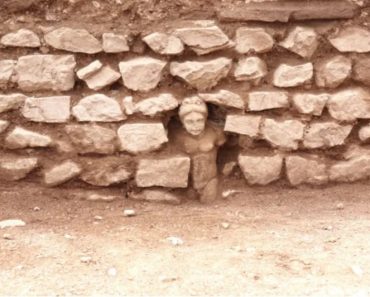The ancient Aegean region of Greece, known for its rich history of democracy and philosophy, has now added another noteworthy title to its legacy: the earliest evidence of human-induced lead pollution. A recent study published on January 30, 2025, reveals findings dating back to approximately 5,200 years ago, challenging earlier assumptions about the impact of industrial activities on the environment.
Researchers from Heidelberg University conducted the study by analyzing sediment cores from both the Aegean Sea and mainland Greece, particularly focusing on sites near the island of Thasos—a historically significant location for silver metalwork. The results indicate lead pollution existed 1,200 years earlier than previously recorded evidence, which was found only recently in peatbogs located much farther north, such as Serbia.
Dr. Andreas Koutsodendris, one of the leading geoscientists on the research team, explained the significant findings: “The presence of lead in these ancient sediments serves as an important marker of early industrial activity and economic shifts.” This early contamination is attributed to metallurgical processes involving copper and silver smelting, integral to the burgeoning economies of ancient civilizations.
Unlike previous assumptions, which suggested lead pollution began only during the expansive reach of the Roman Empire, this new study demonstrates the origins of such contamination began much earlier. The levels of lead contamination remained relatively low and localized during periods known for cultural advancement, including the Bronze Age, Classical period, and even the Hellenistic period.
The timeline shifts dramatically around 2,150 years ago, coinciding with the Roman conquest of the Greek peninsula around 146 B.C. This was when researchers discovered marked increases in lead concentration alongside evidence of intensified agricultural practices and significant deforestation. “The changes coincide with the conquest of Hellenistic Greece by the Romans, who… claimed for themselves the region’s wealth of resources,” noted Prof. Dr. Joseph Maran, another key archaeologist on the study.
This historical pivot not only catalyzed changes to Greek society but also transformed the economic practices of the time. With the demand for silver coins surging, the Romans amplified mining operations for precious metals, exacerbated by the smelting activities which invariably released lead as waste. The ramifications were immediate and deeply entrenched as lead pollution became evident not just on land but also detected for the first time within marine sediments of the Aegean Sea.
Yale historian Joseph Manning highlights the significance by declaring, “Lead released from smelting is the world’s first form of toxic or industrial pollution.” This statement comprises the broader implication of how human activities have adversely influenced environmental health across centuries.
Key aspects of this study were derived from sediment cores collected over two decades during marine research expeditions by the METEOR and AEGAEO ships. The collaboration included scientists hailing from multiple institutions across Germany and Greece, unequivocally certifying the depth of research and conclusions being drawn.
What stands out as equally important is the synergy between human innovation and nature’s response. The significant influx of lead pollution reflects not only the technical capabilities of ancient societies but also the sustainability issues faced during their quests for wealth and expansion. By extending our knowledge about such events, we can learn from the past and reflect on continuing environmental challenges.
Dr. Koutsodendris articulated the crux of the study by indicating, “The simultaneous rise in lead pollution and land-use changes reflects a transition from agrarian economies to monetized economies.” This notion not only encapsulates the findings of the study but also serves as a cautionary reminder of how economic ambition can lead to significant ecological impacts.
The findings of this current research make it evident there remains much to unravel about ancient activities and their long-term footprint on our ecosystem. Understanding the historical roots of pollution helps paint a clearer picture of humanity’s relationship with the environment, fostering potential lessons applicable even today as we face global environmental crises.
Through this lens, the discovery of ancient lead pollution presents more than just scientific data—it provides a gate through which to converse about sustainability, historical accountability, and the need for conscious stewardship of our planet. The legacy of lead pollution serves as both history’s marker of industrial progress and the harbinger of environmental responsibility we continue to navigate today.







